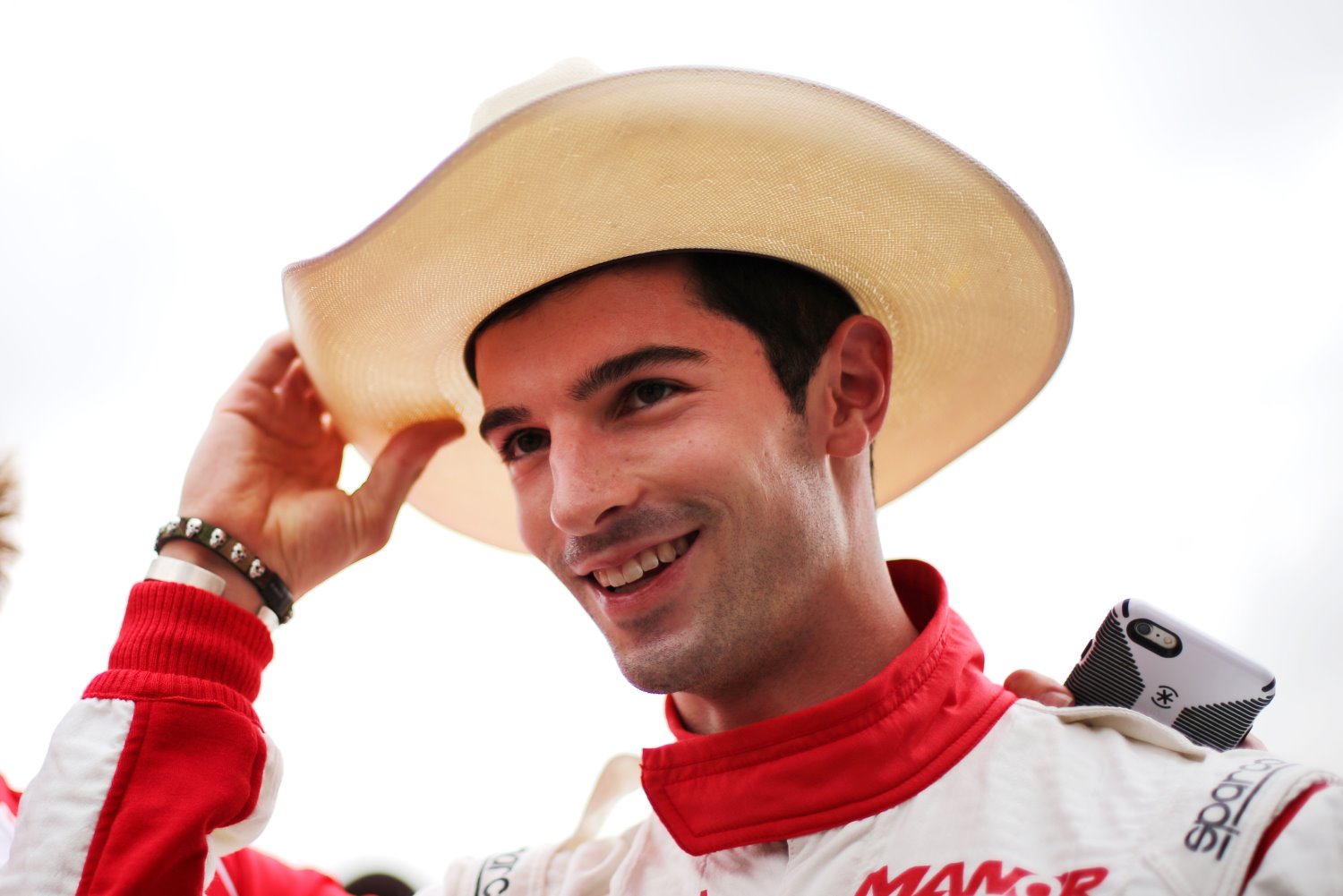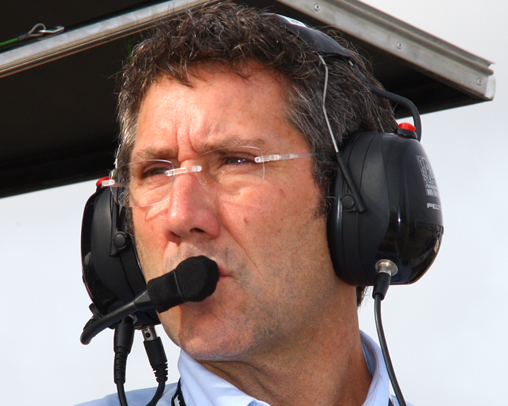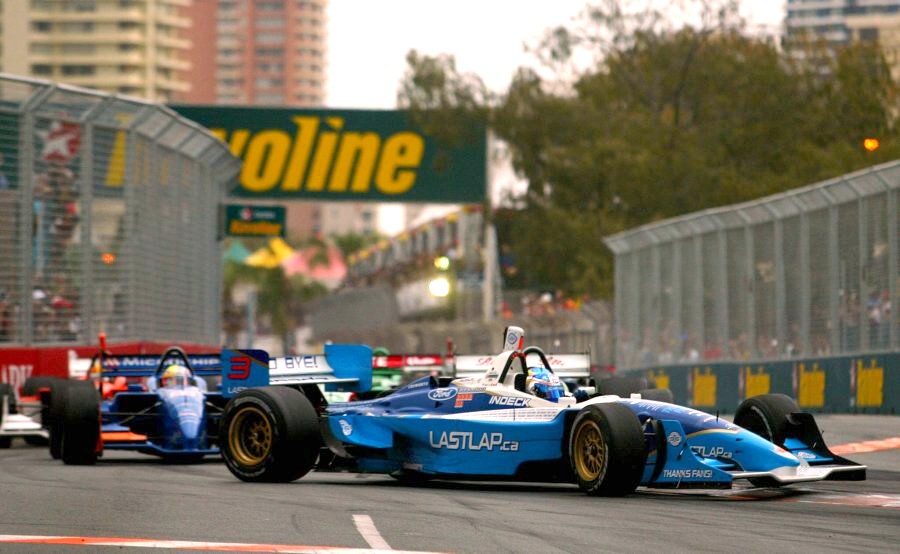What should IndyCar do to stir the global giant?
 |
| Alexander Rossi is the last American who had any shot at making a career in F1 but ran out of money. Liberty Media wanted to turn IndyCar into a global powerhouse. The Hulman George family decided it was best to keep it a small domestic series |
If you take a glance at the IndyCar field, there are some names that don't necessarily sound like they grew up eating hot dogs, glazed doughnuts, breaded tenderloin sandwiches, and biscuits and gravy for breakfast.
Alexander Rossi may be from California, but he shares a surname with a flamboyant MotoGP legend who refuses to even acknowledge the existence of the letter 'h' when repeatedly pronouncing how 'appy' he is. More importantly, Rossi only returned from Europe once it was clear his flirt with Formula 1 hadn't really worked out.
We all know that Formula 1 and Europe flow through Marco Andretti's veins, that Marcus Ericsson is a Swede with thousands of F1 miles on the odometer, that Takuma Sato has a place in Japanese hearts right alongside Ayrton Senna, and that Fernando Alonso has quit Formula 1 specifically to add the only feather to his cap that really matters to him now – Indy 500 victory. Even McLaren, one of the most successful F1 brands in history, is fielding a full-on team in 2020.
So it might be argued that, one way or another, the presence of the top levels of European motor racing is very much felt on the IndyCar grid. It begs an obvious question:
Why is IndyCar itself ignoring Europe and the rest of the world?
[adinserter name="GOOGLE AD"]Toronto aside, every single stop on the 2020 schedule is in the States. Not just that, California and Texas are each represented twice, which begs the obvious conclusion that if international races were viable, they'd be there already.
There's almost no one in the motor racing world, but certainly those in the IndyCar paddock, who wouldn't love to see one of the world's most stunning destinations – Surfers Paradise – back on the schedule. But what happened to Mexico? Japan? Brazil? Or Germany, whose Lausitzring event is remembered most for what happened to Alex Zanardi rather than for the impact that America's top category of open wheeler racing has had on Europe?
What's the deal?
A student of F1/Indy relations might conclude that a little guy with a grey Beatle mop may be to blame, as Bernie Ecclestone was indeed as fiercely and vocally (and, presumably, politically) opposed to top American racing thriving outside of America as he was to embracing Twitter at the age of 89. Why? That's pretty obvious: IndyCar (and its various former guises and incarnations) used to be one hell of a competitor for Ecclestone's own series, and it even managed to woo and snatch (and almost woo and snatch) top stars like Nigel Mansell and Ayrton Senna.
 |
| CART was expanding IndyCar globally, but this man, Tony George, destroyed all that |
Jacques Villeneuve, the son of an F1 legend who actually built his own career off internationally-recognised success in America, said Formula 1's US cousin really annoyed Bernie in the 90s.
"I think he was very instrumental in separating IndyCar," said the 1995 CART and Indy 500 champion, referring to the CART/IRL split. "IndyCar died because it was starting to damage Formula 1."
While that's probably fairly accurate, Tony George certainly played his part in forcing the participants of the super-strong mid-90s CART series to choose a losing side – a weak F1-style Champ Car or a weak oval-focused IRL – in what became notoriously known as The Split.
Indeed, the premier form of American open wheeler racing that even dyed-in-the-wool F1 fans remember and love almost did die, and it's a tribute to those who performed the CPR and supplied the years of open heart surgery and life-support to recognise that it is clawing its way back today. "The on-track product," said series legend Bobby Rahal, "has never been better."
Even so, if you ask the Average Joe on Main St about American racing, they'll probably think about munching onion rings and slurping root beer whilst watching a roaring car with a roof. And if you head to the Cafe at Beau Rivage in Monte Carlo and ask the same question, they'll mumble something in French about Alonso, or perhaps conjure an image of Graham Hill without wings in 1966.
It's therefore no real surprise that, in the wake of Ecclestone's 90s victory and George's own goal, IndyCar has struggled to make another mark on an international scale. Yes, you can – if sufficiently motivated – find ways to watch the series if you're outside the US, but it's fair to say that while IndyCar is heaving a sigh of relief with its improved NBC deal, there just isn't a clear strategy for getting eyes that are not screwed into heads in the US to tune in.
Reach Globally or stay Small Domestically?
 |
| CART raced successfully in Surfers Paradise, but Tony George destroyed that as soon as the IRL/Champ Car merger was announced |
"Exposure in Europe and Australia and Asia is definitely lacking," agrees Alexander Rossi, who has witnessed first-hand the power of Formula 1's global vision and reach. Indeed, the last overseas Indy race was Brazil in 2013, but just a single race or two in temperate climates would expand out the extremes of the calendar, attract at least a chunk of the world's attention, and according to Michael Andretti put half a million dollars in the pocket of every team owner.
The almost infinite passion and experience of Roger Penske might begin to turn things around, but he will know better than anyone that the only European crowd that is likely to congregate if Formula 1 isn't on the menu is MotoGP rather than IndyCar. Indeed, he said quite recently that he isn't interested in getting on a flight bound for Heathrow or Berlin Brandenburg.
A wiser strategy would be to get things going in February rather than March, or wrap things up in October rather than September, by quickly doing a deal in popular sunny Australia. Next, given the presence of NTT, Firestone parent Bridgestone, Honda, and the incredibly popular-in-Japan Takuma Sato, Japan should be next on the list. And then, and only then, will the US-obsessed IndyCar begin to stir the global giant.
